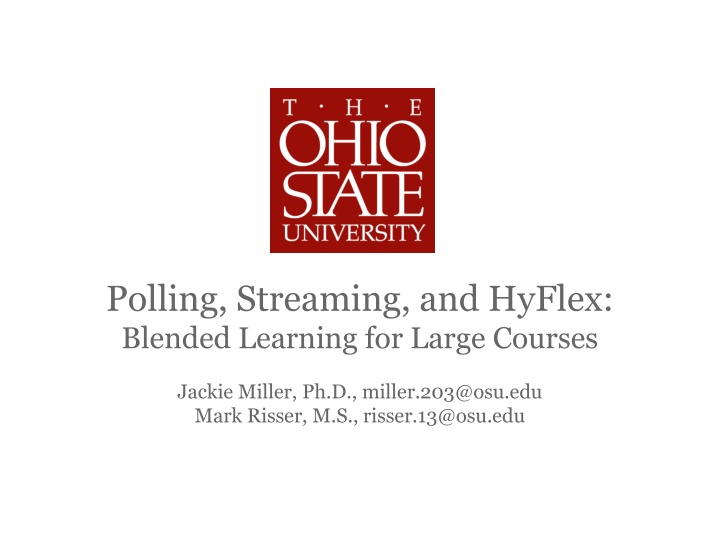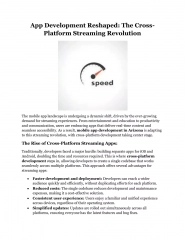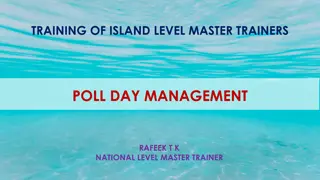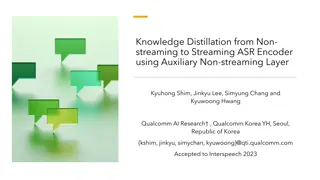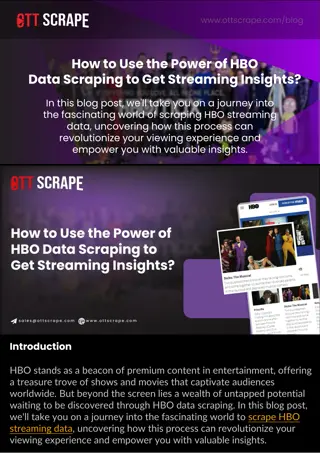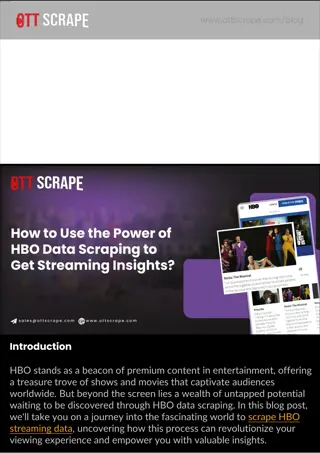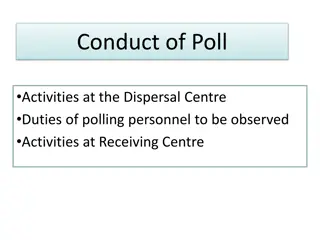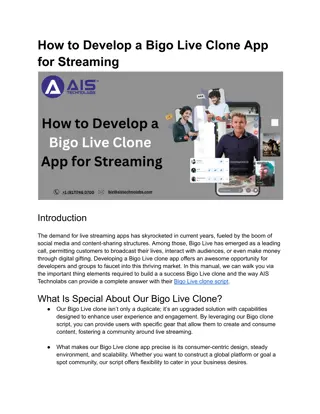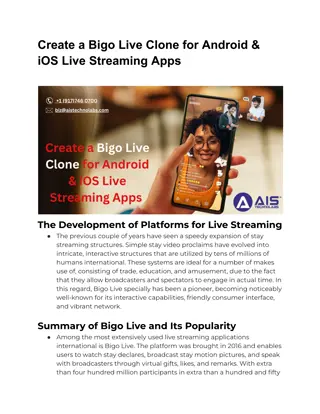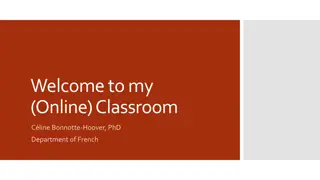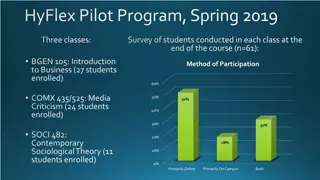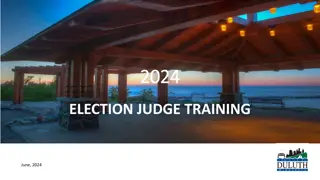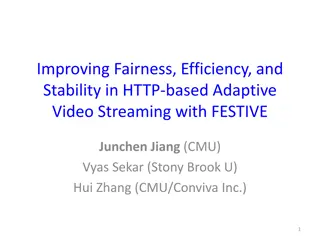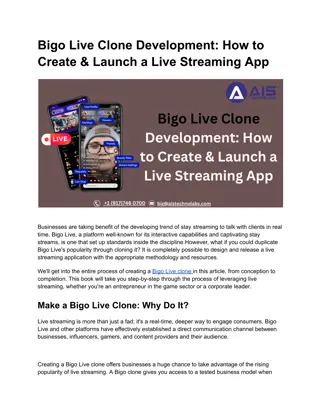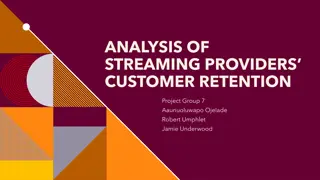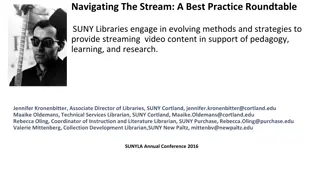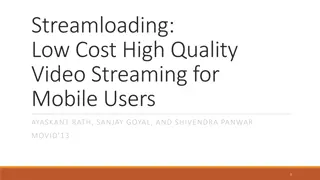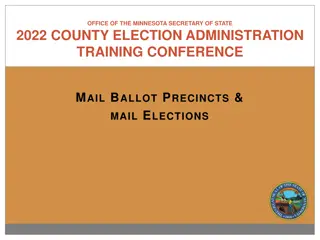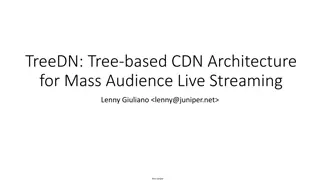Enhancing Learning with the HyFlex Model: A Blend of Polling, Streaming, and Student Choice
The HyFlex model offers a dynamic approach to education, incorporating elements like polling, streaming, and student choice to cater to the diverse needs of large courses. With a focus on autonomy and flexibility, this model aims to engage students through interactive technologies such as backchannel communication and live polling. By leveraging these tools, traditional courses can also embrace student-centered learning and adapt to the changing landscape of education.
Download Presentation

Please find below an Image/Link to download the presentation.
The content on the website is provided AS IS for your information and personal use only. It may not be sold, licensed, or shared on other websites without obtaining consent from the author.If you encounter any issues during the download, it is possible that the publisher has removed the file from their server.
You are allowed to download the files provided on this website for personal or commercial use, subject to the condition that they are used lawfully. All files are the property of their respective owners.
The content on the website is provided AS IS for your information and personal use only. It may not be sold, licensed, or shared on other websites without obtaining consent from the author.
E N D
Presentation Transcript
Polling, Streaming, and HyFlex: Blended Learning for Large Courses Jackie Miller, Ph.D., miller.203@osu.edu Mark Risser, M.S., risser.13@osu.edu
The HyFlex Model: Student Choice, Instructor Flexibility Motivation Growing university enrollment 21.5 million total enrolled in fall 20101 Increase of 41% from fall 2000 enrollment2 Decreased assistance for education Education costs have increased faster than inflation and family income3 In 2002, Pell Grants covered a smaller portion of tuition than in 1986 (at four-year colleges)3
The HyFlex Model: Student Choice, Instructor Flexibility Motivation Increased online enrollment 6.1 million students in fall 2010 took at least one online course (a one-year increase of 560,000 students)4 Growing popularity of MOOCs (e.g., Coursera, Udacity, edX, iTunes U, )
The HyFlex Model: Student Choice, Instructor Flexibility Motivation Why? AUTONOMY and CHOICE Students choose how and when to access content Pedagogical foundations Students can direct their own learning6 Students have a role in selecting objectives7 Accommodates different learning preferences8
The HyFlex Model: Student Choice, Instructor Flexibility Motivation Good news: non-online courses can do this too! While not a requirement, technology amplifies the opportunities for incorporating student choice in education For example: a backchannel and live polling
The HyFlex Model: Student Choice, Instructor Flexibility Technology for introducing choice Backchannel communication A mode of communication created by audience members to connect with other observers both inside and outside of the presentation space, with or without the speaker s awareness9 A web-based forum to facilitate real-time conversation among students (and possibly the instructor) during a traditional lecture10 Can entice students who rarely raise a hand to express themselves via a medium they find as natural as breathing 11
The HyFlex Model: Student Choice, Instructor Flexibility Technology for introducing choice Backchannel communication Use of a backchannel increases feelings of connectedness and provides real-time feedback within a micro discussion context (text messaging or Twitter)12 Increases audience engagement by allowing participants to report and comment on course content publicly; gives the presenter more direct and immediate feedback9
The HyFlex Model: Student Choice, Instructor Flexibility Technology for introducing choice Polling via Audience Response Systems ARS are instructional technologies that allow instructors to rapidly collect and analyze student responses to questions posed during class 13 Commonly known as clickers ; now includes web-based polling using text messaging and mobile devices.
The HyFlex Model: Student Choice, Instructor Flexibility Technology for introducing choice Polling via Audience Response Systems Yields more active student involvement, increased attention levels and interaction, and increased comfort in answering questions14 Results in significantly higher course satisfaction scores14 Gives instructors the ability to assess existing knowledge and provide immediate feedback15 Acknowledges individual responses while maintaining anonymity16
The HyFlex Model: Student Choice, Instructor Flexibility A comprehensive solution: the HyFlex (hybrid-flexible) model HyFlex courses provide participation options for students, allowing them to choose between online and classroom-based learning on a weekly (or regular) basis. Essentially, students create their own blend of participation that fits their needs and desires. Dr. Brian Beatty (drbrianbeatty.com/hyflex.html) Note: HyFlex is not the same as Blended Learning!
The HyFlex Model: Student Choice, Instructor Flexibility Goals We wanted to: Apply HyFlex in large, on-campus courses Allow daily attendance choices While: Providing a similar experience for students across attendance choices
The HyFlex Model: Student Choice, Instructor Flexibility Implementation Attendance options: 1. Face-to-face (traditional) 2. Online, synchronous attendance (lecture recordings made available as well)
The HyFlex Model: Student Choice, Instructor Flexibility Implementation Technology used: Tablet PC Wireless lapel microphone Adobe Connect (a web-conferencing tool) Poll Everywhere (live polling/backchannel) Poll Everywhere/Twitter (backchannel)
The HyFlex Model: Student Choice, Instructor Flexibility Implementation Use of Our Model Algebra-based introductory statistics course (since Autumn 2011) Calculus-based probability portion of probability and statistics for engineers (Spring 2012) Calculus-based introductory statistics course (Autumn 2012)
The HyFlex Model: Student Choice, Instructor Flexibility Implementation Adobe Connect screenshot
The HyFlex Model: Student Choice, Instructor Flexibility Implementation Backchannel screenshot (Poll Everywhere)
The HyFlex Model: Student Choice, Instructor Flexibility Implementation Poll Everywhere online polling screenshot (Note: choice B is correct!)
The HyFlex Model: Student Choice, Instructor Flexibility Questions of Interest 1. How does student performance/learning in the pilot section compare to students in a traditional section? (START test17) 2. How does attendance method affect student performance/learning? 3. How are students using the HyFlex resources? 4. What do students think about the HyFlex classroom model?
The HyFlex Model: Student Choice, Instructor Flexibility Comparing grades, pilot vs. traditional No significant difference between traditional and pilot sections for all three terms Pilot: one section of Stat 145 students with HyFlex options (traditional technology plus backchannel, attendance choices, and polling) Traditional: two sections of Stat 145 students in a normal course (use of tablet PC, online homework)
The HyFlex Model: Student Choice, Instructor Flexibility Comparing grades by attendance method Face to face versus Adobe Connect (Fall 11) 95% Confidence Interval for average face-to-face grade minus average Adobe Connect grade Attendance Method (most often) Average Grade p-value Face to Face 17.21 Homework (20 points total) (-1.418, 2.000) 0.7312 Adobe Connect 16.92 Face to Face 42.73 Midterm (50 points total) (-1.476, 5.074) 0.2724 Adobe Connect 40.93 Face to Face 81.85 Final Grade (-4.223, 11.731) 0.3448 Adobe Connect 78.11 No significant difference for all three grade categories
The HyFlex Model: Student Choice, Instructor Flexibility Comparing grades by attendance method Face to face versus Adobe Connect (Winter, Spring 12) Winter '12 Spring '12 95% Confidence Interval for average face-to-face grade minus average Adobe Connect grade 95% Confidence Interval for average face-to-face grade minus average Adobe Connect grade p-value p-value Homework (20 points total) Midterm (50 points total) (-0.661, 0.234) 0.346 (-1.304, 1.558) 0.8594 (-1.720, 3.953) 0.4321 (-2.035, 4.133) 0.4979 Final Grade (-3.002, 4.646) 0.6675 (-6.162, 4.922) 0.823 No significant difference for all three grade categories in both terms
The HyFlex Model: Student Choice, Instructor Flexibility Stat 145/1450 Lecture Recording Views Min Q1 Median Q3 Max Autumn 2011 20.2% 23.2% 26.8% 28.9% 33.3% Autumn 2012 22.2% 33.3% 42.5% 45.3% 51.4% Note the increase in lecture recording views from Autumn 2011 to Autumn 2012.
The HyFlex Model: Student Choice, Instructor Flexibility Stat 145/1450 Lecture Recording Views
The HyFlex Model: Student Choice, Instructor Flexibility Student Reactions End-of-term Survey Strongly Agree/Agree Strongly Disagree/ Disagree N/A It was easy for me to respond to a lecture poll using Poll Everywhere. 82.1% 8.7% 9.2% It was easy for me to submit a question during lecture via Poll Everywhere. 70.6% 8.7% 20.6% It was easy for me to access the online lectures with Adobe Connect. It was easy for me to access the lecture recordings in the university learning management system. 78.9% 3.2% 17.9% 84.9% 1.8% 13.3% Composite results from Fall, Winter, Spring. 218 responses (44%).
The HyFlex Model: Student Choice, Instructor Flexibility Student Reactions Strongly Agree/Agree Strongly Disagree/ Disagree IT helped make the materials and activities in the course more interesting. IT helped me increase my understanding of the concepts in the course. IT helped me increase my participation in class over what I would have expected coming into the course. 91.7% 8.3% 93.6% 6.4% 75.2% 24.8% 218 responses (44%). Instructional technology (IT) defined to be any combination of tablet- based slides in PowerPoint, statistical applets, Poll Everywhere, and Adobe Connect.
The HyFlex Model: Student Choice, Instructor Flexibility Student Reactions: Feedback (Stat 145) Themes Found in Student Reactions/Feedback Students like flexibility Attendance is motivated by students daily schedules and extracurricular commitments Technology increased participation and enjoyment Technology removed the embarrassment factor HyFlex resources increased understanding and allowed for better review of material
The HyFlex Model: Student Choice, Instructor Flexibility Student Reactions: Feedback (Stat 145) Comparison of attendance methods: strong preferences for both live attendance methods Students want HyFlex in other courses I've never had [attendance options like the ones in this course] before and would like to have them for other classes.
The HyFlex Model: Student Choice, Instructor Flexibility Student Reactions: Feedback (Stat 145) However I may have learned a little less from watching the lectures [synchronously] than if I had actually gone to lecture. I would have been more focused. I felt there were way too many technology issues and that half the time was spent fixing Adobe Connect. The recording of lectures and live streaming seemed to really slow down the pace of the class.
The HyFlex Model: Student Choice, Instructor Flexibility Student Reactions: Feedback From an upper-level course: I loved having 3 options going to class, watching live on Adobe Connect, or watching recording later. It really came in handy and really helped. Most of the time I went to class, but some mornings if my ankle really hurt (tendinitis) and I didn t want to walk to campus or if I was just having one of those bad mornings where nothing is going right and you haven t had time to make coffee, I would turn on Adobe Connect and be able to type in questions and act as if I was actually in class (it was even better because I wasn t distracted by class room chatter and I could stay in my PJs with unlimited supply of coffee). Having the recordings was also a big help for the days that I couldn t wake up or for studying for both exams when I couldn t remember what your explanation was in the notes. ... I wish they would use this system in all of my classes!
The HyFlex Model: Student Choice, Instructor Flexibility Questions for continued research What is the best technology to use? Desired technology may not exist Compatibility/cost issues Creatively optimizing what is available Pushing the envelope Dealing with technical difficulties
The HyFlex Model: Student Choice, Instructor Flexibility Questions for continued research Backchannel Development Not yet in its optimal form Needs to be real-time, in-class Forum for students to ask questions, answer other students questions, host relevant discussion on lecture content Students currently not required to bring a laptop to class Is there a better technology option? (Probably/Yes) We will continue continue to work on this
The HyFlex Model: Student Choice, Instructor Flexibility Questions? Interested in joining the conversation? Jackie Miller, miller.203@osu.edu Mark Risser, risser.13@osu.edu
The HyFlex Model: Student Choice, Instructor Flexibility Student Reactions: Feedback (Stat 145) Students like flexibility I enjoyed being able to watch class on my laptop sitting in my bedroom with a cup of coffee, in my pajamas. I learn better when I am comfortable, especially with morning classes. Technology made the class very convenient for a busy college student lifestyle and (sic) way better. The fact that I was able to access the lectures at a time of my choosing made my lecture attendance the highest of all my courses. The teaching style and the options of attending lecture made going to class much easier and more convenient, while still making the material easy to understand.
The HyFlex Model: Student Choice, Instructor Flexibility Student Reactions: Feedback (Stat 145) Attendance motivated by students daily schedules and extracurricular commitments I liked that we could attend class online. While I mainly attended class in person, being a student athlete it was nice to be able to still go to lecture and not miss anything while we were traveling. This was a great tool and was a big part of my success in this class. My class schedule was packed this quarter, so it was nice to be able to eat my breakfast in the comfort of my own home while listening to the lecture. On days with bad weather, I could still attend lecture without being miserable trekking across a cold, wet campus.
The HyFlex Model: Student Choice, Instructor Flexibility Student Reactions: Feedback (Stat 145) Technology increased participation and enjoyment This course allowed me to participate and actually enjoy what I was learning. Usually I'm not a fan of technology in the classroom, but this technology was very useful and helped in the class experience. [Poll Everywhere] made me feel really involved in the class. It felt like high school; like I was walking up to the board and solving a problem, but using my cell phone. Statistics has never been my favorite subject/course, but tools [like Adobe Connect, lecture recordings, and the online homework] definitely helped me to progress through the course. Very impressive distance-style teaching methods that helped us learn and not feel unknown.
The HyFlex Model: Student Choice, Instructor Flexibility Student Reactions: Feedback (Stat 145) Technology removed the embarrassment factor I enjoyed being able to ask questions on the backchannel rather than reveal what I didn't know. I wasn't as shy to ask questions over Adobe Connect. I liked the polls; they were a fun way to make sure you understand [the material]. If you get the answer wrong, nobody knows who put the answer in, so [you don t have the embarrassment like] when you raise your hand and pick the wrong choice.
The HyFlex Model: Student Choice, Instructor Flexibility Student Reactions: Feedback (Stat 145) HyFlex resources increased understanding and allowed for better review of material The online technology really helped to aid my learning process. The technology [helped me review] concepts that I may have missed during lecture as a result of zoning out at 8:30 in the morning. I also liked being able to go back, rehear the explanation of an example and make sense of my notes. I loved the online lecture option; it really helped me get all the information that I needed to succeed in the class. I really loved how if I didn t understand a lecture, I could just go back and re-watch the lecture since they are all online.
The HyFlex Model: Student Choice, Instructor Flexibility References 1. Knapp, Laura G., Janice E. Kelly-Reid, and Scott A. Ginder. Enrollment in Postsecondary Institutions, Fall 2010; Financial Statistics, Fiscal Year 2010; and Graduation Rates, Selected Cohorts, 2002-2007. National Center for Education Statistics (March 2012), http://nces.ed.gov/pubs2012/2012280.pdf (accessed July 12, 2012). U.S. Department of Education, National Center for Education Statistics. Digest of Education Statistics (2011), Table 235. http://nces.ed.gov/fastfacts/display.asp?id=98. The National Center for Public Policy and Higher Education. Losing Ground: A National Status Report on the Affordability of American Higher Education. (2002) http://www.highereducation .org /reports/losing_ground/affordability_report_final_bw.pdf. 2. 3.
The HyFlex Model: Student Choice, Instructor Flexibility References 4. Allen, I. Elaine, and Jeff Seaman. Going the Distance: Online Education in the United States, 2011. Babson Survey Research Group (November 2011), http://www.onlinelearningsurvey .com/reports/goingthedistance.pdf (accessed May 14, 2012). Dahlstrom, Eden, Tom de Boor, Peter Grunwald, and Martha Vockley. The ECAR National Study of Undergraduate Students and Information Technology, 2011 (Research Report). Educause Center for Applied Research (October 2011), http://www.educause.edu/library/resources /ecar-national-study-undergraduate-students-and-information- technology-2011-report (accessed July 18, 2012). Chyung, Seung Youn, Amy J. Moll, and Shelley A. Berg. The Role of Intrinsic Goal Orientation, Self-Efficacy, and e-learning Practice in Engineering Education. The Journal of Effective Teaching 10, no. 1 (2010): 22 37. Moore, Michael G. The Individual Adult Learner. In Distance Education: International Perspectives, by David Sewart and Desmond Keegan. London: Croom Helm, 1983. 5. 6. 7.
The HyFlex Model: Student Choice, Instructor Flexibility References 8. Wedemeyer, Charles S. Criteria for Constructing a Distance Education System. Canadian Journal of University Continuing Education 6, no. 1 (1979): 9 17. Atkinson, Cliff. The Backchannel: How Audiences are Using Twitter and Social Media and Changing Presentations Forever. Berkeley: New Riders Press, 2009. 10. Educause Learning Initiative (ELI) Publication. 7 Things You Should Know About Backchannel Communication. Educause Library (February 2010), http://net.educause.edu/ir/library /pdf/ELI7057.pdf (accessed July 12, 2012). 11. Trip, Gabriel. Speaking Up in Class, Silently, Using Social Media. New York Times, May 12, 2011. http://www.nytimes.com/2011/05/13/education/13social.html? _r=2&pagewanted=all (accessed July 3, 2012). 12. Aargard, Hans, Kyle Bowen, and Larisa Olesova. Hotseat: Operating the Backchannel in Large Lectures. Educause Quarterly 33, no. 3 (2010), http://www.educause.edu/ero/ article/hotseat-opening- backchannel-large-lectures. 9.
Polling, Streaming, and HyFlex: Blended Learning for Large Courses References 13. Bruff, Derek. Teaching with Classroom Response Systems: Creating Active Learning Environments. San Francisco: Jossey-Bass, 2009. 14. Filer, Debra. Everyone s Answering: Using Technology to Increase Classroom Participation. Nursing Education Perspective 31, no. 4 (2010): 247-50. 15. Kyei-Blankson, Lydia. Enhancing Student Learning in a Graduate Research and Statistics Course with Clickers. Educause Quarterly 32, no. 4 (2009), http://www.educause.edu/ero /article/enhancing- student-learning-graduate-research-and-statistics-course-clickers (accessed July 10, 2012). 16. Campt, David, and Matthew Freeman. Talk Through the Hand: Using Audience Response Keypads to Augment the Facilitation of Small Group Dialogue. International Journal of Public Participation 3, no. 1 (2009): 80-107. 17. Delmas, Robert, Joan Garfield, Ann Ooms, and Beth Chance. Assessing Students Conceptual Understanding After a First Course in Statistics. Statistics Education Research Journal 6, no. 2 (2007): 28 58.
